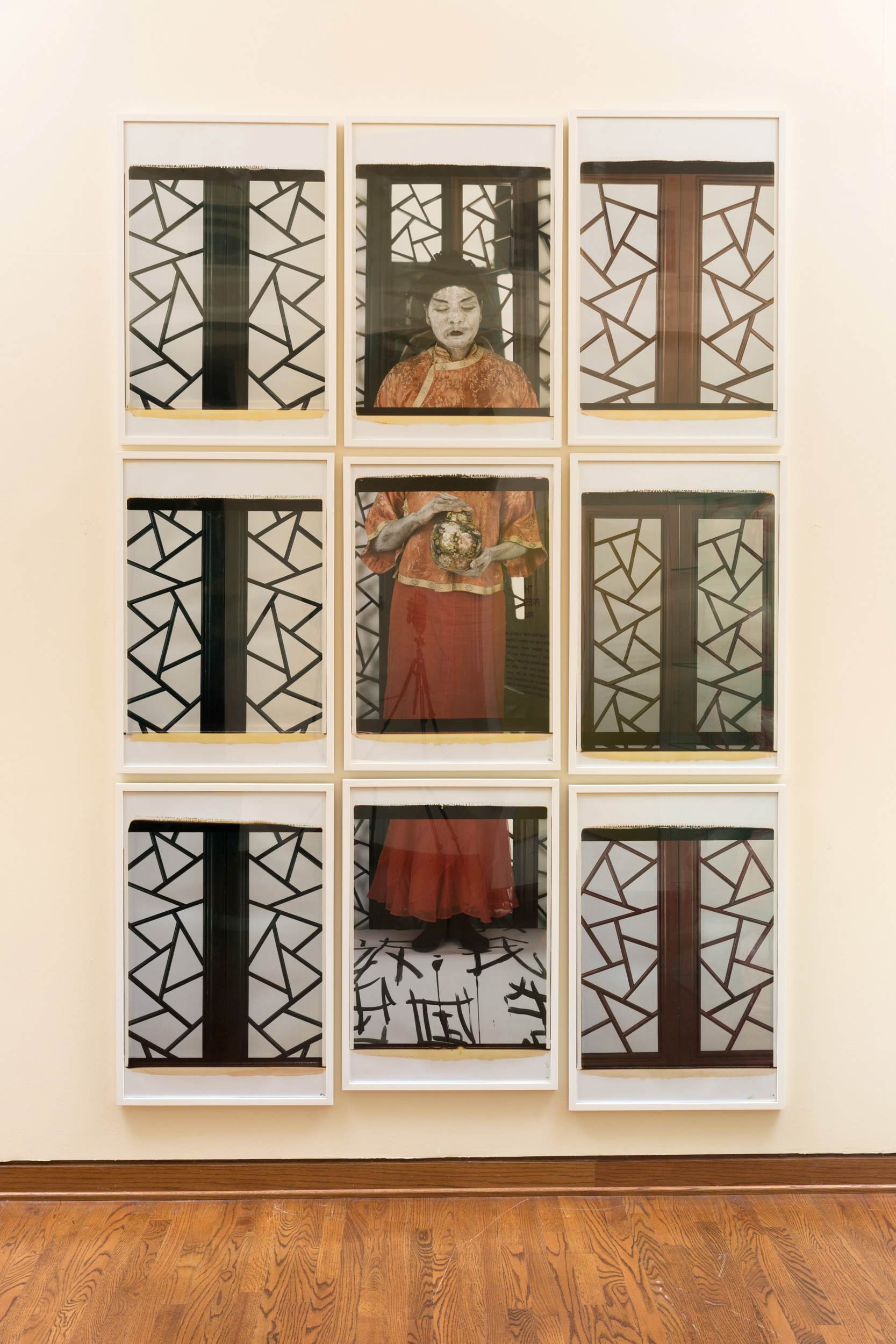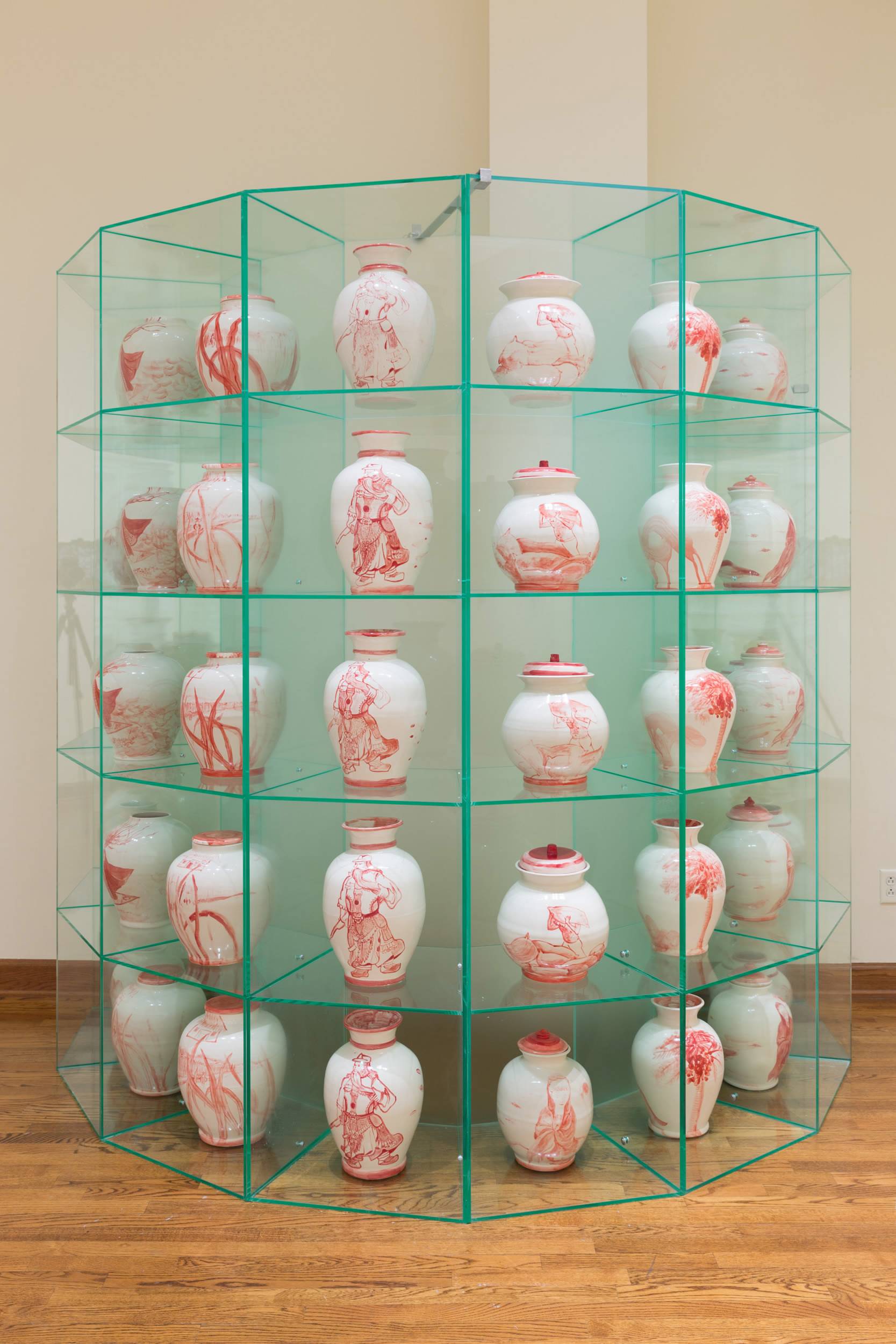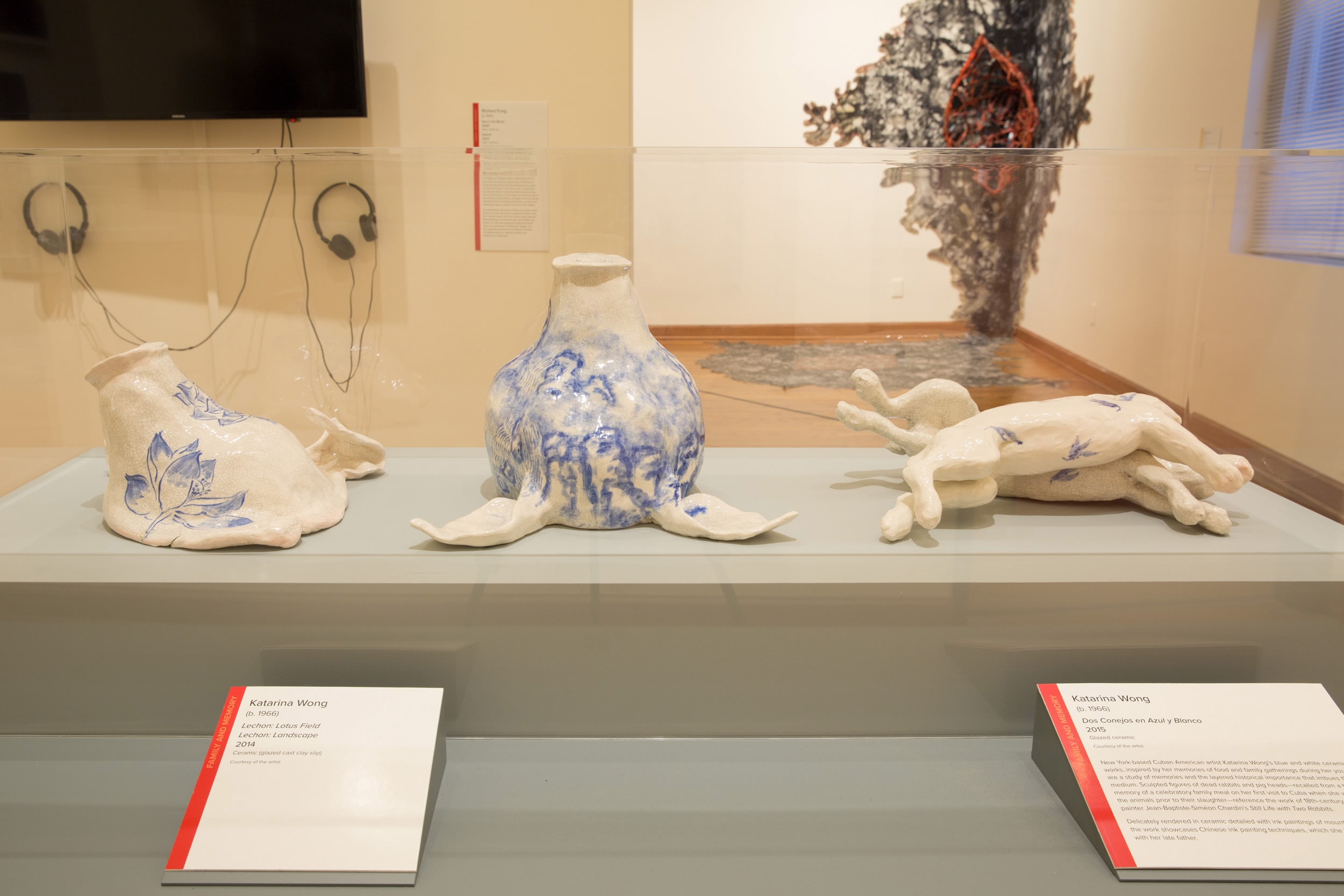The Caribbean might seem like an unlikely focus for an art exhibit revolving around the Chinese diaspora. But for the curators who spent four years developing a dual museum exhibit in the US, it made perfect sense.
"We chose specific areas to visit that we know had a Chinese presence and had art… [we were] interested in covering areas where there were migrations of China," the exhibition's co-curator Alexandra Chang told CGTN Digital. "There have been historic migrations since the mid-15th century, but it wasn’t until the mid-1800 when there was a huge migration mostly from southern China – seven million Chinese at the time."
The "Circles and Circuits" exhibition explored the contributions of artists of Chinese origin in Cuba, Panama, Trinidad and Tobago, Jamaica, and beyond, thus revealing the hidden complexities of the transcultural art of the Caribbean.
"We were grateful to work with Caribbean thinkers while curating this," she said. "Not the traditional European thinking."

"My Mother Told Me I Am Chinese: The Painting Lesson", 2008, a composition of nine Polaroid panels. Maria Magdalena Campos-Pons, Samsøñ, and Gallery Wendi Norris. Installation view in "Circles and Circuits II: Contemporary Chinese Caribbean Art". /Ian Byers-Gamber, courtesy of the Chinese American Museum, Los Angeles
"My Mother Told Me I Am Chinese: The Painting Lesson", 2008, a composition of nine Polaroid panels. Maria Magdalena Campos-Pons, Samsøñ, and Gallery Wendi Norris. Installation view in "Circles and Circuits II: Contemporary Chinese Caribbean Art". /Ian Byers-Gamber, courtesy of the Chinese American Museum, Los Angeles
Artistic expression
The Chinese American Museum and the California African American Museum teamed up for the unique two-part exhibition.
"Thinking about how the Asian and African communities came together," Chang said, "it’s important to have those stories now especially in the US where the country is so politically divided now.”
Chang and co-curator Steven Y. Wong curated the exhibition that ran from last September until March 11.
The exhibit includes works by 39 artists which have been split between the two museums. Pieces range from traditional paintings to video collages and installations.
"Circles and Circuits I: History and Art of the Chinese Caribbean Diaspora" examined the works of the Chinese-Caribbean diaspora from the early 20th century.
The second part – "Circles and Circuits II: Contemporary Chinese Caribbean", focused on the work of contemporary artists examining popular culture and the post-colonial era of the Caribbean.

"My Mother Told Me I Am Chinese: China Porcelain", 2008, hand-painted Chinese porcelain and Plexiglas shelf. Maria Magdalena Campos-Pons, Samsøñ, and Gallery Wendi Norris. Installation view in "Circles and Circuits II: Contemporary Chinese Caribbean Art". /Ian Byers-Gamber, courtesy of the Chinese American Museum, Los Angeles
"My Mother Told Me I Am Chinese: China Porcelain", 2008, hand-painted Chinese porcelain and Plexiglas shelf. Maria Magdalena Campos-Pons, Samsøñ, and Gallery Wendi Norris. Installation view in "Circles and Circuits II: Contemporary Chinese Caribbean Art". /Ian Byers-Gamber, courtesy of the Chinese American Museum, Los Angeles
Chinese perspective
Regardless of geographic location, Chinese culture has influenced these artists.
“I grew up aware of my Chinese ancestors, there was significant consumption of Chinese food at home. In fact one of my favorite desserts was something we called at home 'Calabazita China', still, you could find it in Matanzas," artist María Magdalena Campos-Pons told CGTN Digital.
"I was aware of the Chinese influence in Santeria objects of the workshop and just was a very common layer of everyday life," the Cuban-born visual artist said, noting that the Chinese side of her family worked as indentured servants in sugar mills in Cuba.
"What I know about them is that they were in the west of the island original in Pinar del Rio, in a town called Guane. I believe the work there was centered on tobacco and railroad," she told CGTN Digital from Nashville, Tennessee in the US. "When I was young I visited some of my Chinese relatives in Havana City."

Video stills from "Islands", 2002 (L) and "Sea in the Blood", 2000. /Richard Fung and Vtape, Canada.
Video stills from "Islands", 2002 (L) and "Sea in the Blood", 2000. /Richard Fung and Vtape, Canada.
How did the Chinese-Caribbean connection start?
From the 1800s through the 1900s, Chinese immigrants came in several waves to the Caribbean. First, indentured laborers were brought to islands like Trinidad and Cuba, where they sometimes worked alongside slaves even after slavery was officially outlawed. Later, as the slave-supported sugar industry collapsed, immigrants and former indentured workers joined a growing paid labor force.
"The exhibition features two videos that have to do with my family, which went from Fujian to Trinidad and Tobago in the early 1860s," Richard Fung told CGTN Digital. "My mother was third-generation Chinese Trinidadian. My father was Hakka and immigrated to Trinidad in the early 1920s."
The video artist, who is also a writer, public intellectual and theorist, said his work examines how colonial and post-independence racial contexts impact interpersonal and social relations in Trinidad and Tobago primarily from a Chinese perspective.

(Left to right) "Lechon: Lotus Field", 2014, ceramic; "Lechon: Landscape", 2014, ceramic; "Dos Conejos en Azul y Blanco", 2015, glazed ceramic. Katarina Wong. Installation view in "Circles and Circuits II: Contemporary Chinese Caribbean Art". / Ian Byers-Gamber, courtesy of the Chinese American Museum, Los Angeles.
(Left to right) "Lechon: Lotus Field", 2014, ceramic; "Lechon: Landscape", 2014, ceramic; "Dos Conejos en Azul y Blanco", 2015, glazed ceramic. Katarina Wong. Installation view in "Circles and Circuits II: Contemporary Chinese Caribbean Art". / Ian Byers-Gamber, courtesy of the Chinese American Museum, Los Angeles.
Work of art
"A video installation of mine was featured in the United Nations Habitat Pavilion of the Shanghai Expo," Fung said.
Both artists have had their work displayed in China.
"I exhibited in the Third Guangzhou Triennial in 2008. My work was acquired by the Contemporary Museum. I have not visited yet but will love so," Campos-Pons said.
According to Chang, it was enlightening to work with transnational artists. "Fundamentally I was in awe of the work that exists in the region," she said.
Even though this exhibit focuses on the art from the Chinese diaspora in the Caribbean, Fung marveled at how interconnected the world really is.
"My uncle participated in a Hollywood film as an extra playing a Japanese soldier in World War II," Fung said. "I was intrigued by this Chinese man playing a Japanese soldier in a movie shot in the Caribbean island of Tobago standing in for an unnamed Pacific island."






